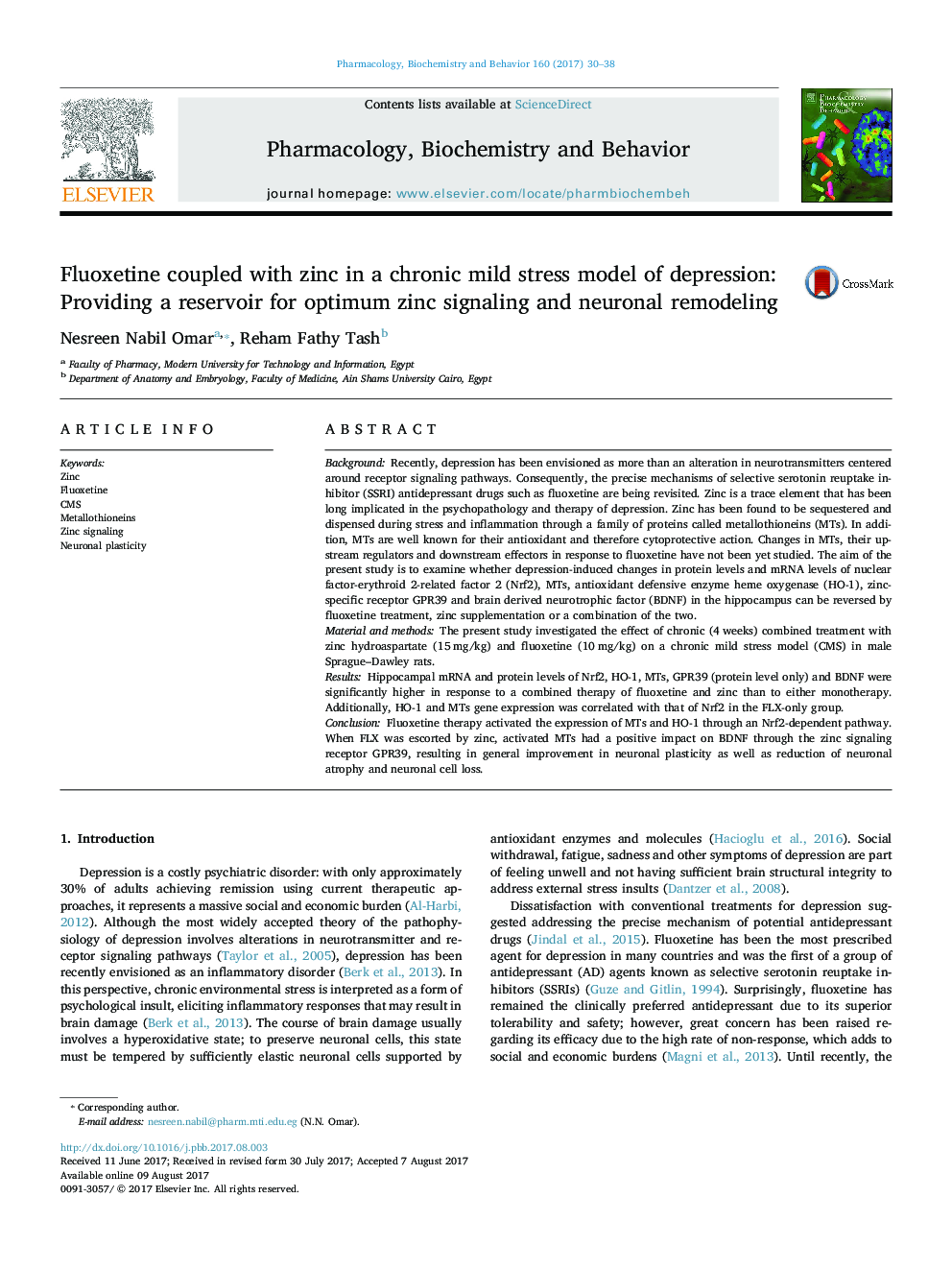| Article ID | Journal | Published Year | Pages | File Type |
|---|---|---|---|---|
| 5515149 | Pharmacology Biochemistry and Behavior | 2017 | 9 Pages |
â¢Zinc increases the expression of the zinc reservoir; MTs.â¢FLX increases the expression of HO-1 and MTs through Nrf2 pathway.â¢Combining FLX with zinc increases the expression of GPR39 and BDNF.â¢Combining FLX with zinc improves the anhedonic behavior and performance in FST.â¢Zinc potentiates the antidepressant action of FLX.
BackgroundRecently, depression has been envisioned as more than an alteration in neurotransmitters centered around receptor signaling pathways. Consequently, the precise mechanisms of selective serotonin reuptake inhibitor (SSRI) antidepressant drugs such as fluoxetine are being revisited. Zinc is a trace element that has been long implicated in the psychopathology and therapy of depression. Zinc has been found to be sequestered and dispensed during stress and inflammation through a family of proteins called metallothioneins (MTs). In addition, MTs are well known for their antioxidant and therefore cytoprotective action. Changes in MTs, their upstream regulators and downstream effectors in response to fluoxetine have not been yet studied. The aim of the present study is to examine whether depression-induced changes in protein levels and mRNA levels of nuclear factor-erythroid 2-related factor 2 (Nrf2), MTs, antioxidant defensive enzyme heme oxygenase (HO-1), zinc-specific receptor GPR39 and brain derived neurotrophic factor (BDNF) in the hippocampus can be reversed by fluoxetine treatment, zinc supplementation or a combination of the two.Material and methodsThe present study investigated the effect of chronic (4Â weeks) combined treatment with zinc hydroaspartate (15Â mg/kg) and fluoxetine (10Â mg/kg) on a chronic mild stress model (CMS) in male Sprague-Dawley rats.ResultsHippocampal mRNA and protein levels of Nrf2, HO-1, MTs, GPR39 (protein level only) and BDNF were significantly higher in response to a combined therapy of fluoxetine and zinc than to either monotherapy. Additionally, HO-1 and MTs gene expression was correlated with that of Nrf2 in the FLX-only group.ConclusionFluoxetine therapy activated the expression of MTs and HO-1 through an Nrf2-dependent pathway. When FLX was escorted by zinc, activated MTs had a positive impact on BDNF through the zinc signaling receptor GPR39, resulting in general improvement in neuronal plasticity as well as reduction of neuronal atrophy and neuronal cell loss.
Graphical abstractDownload high-res image (107KB)Download full-size image
